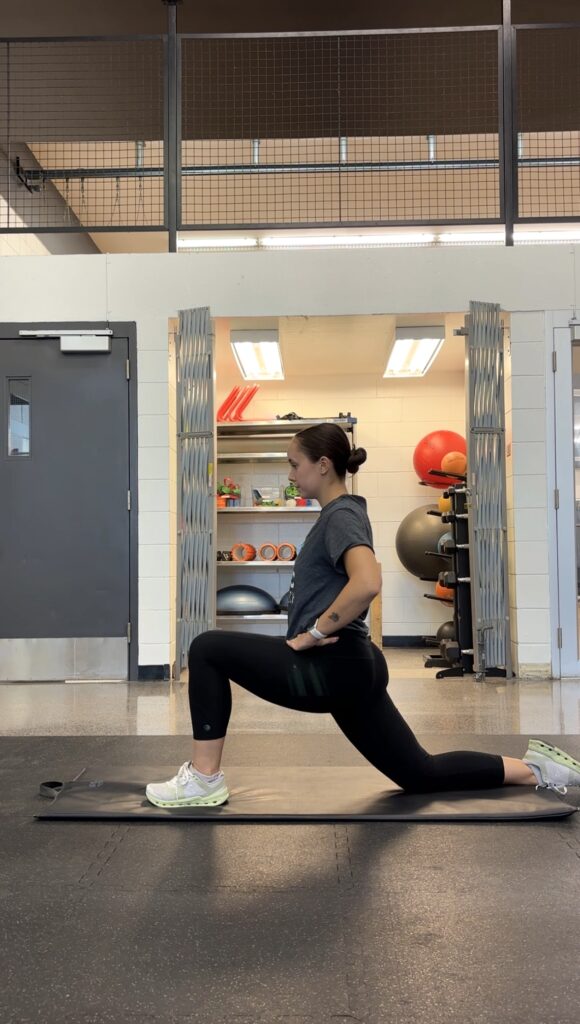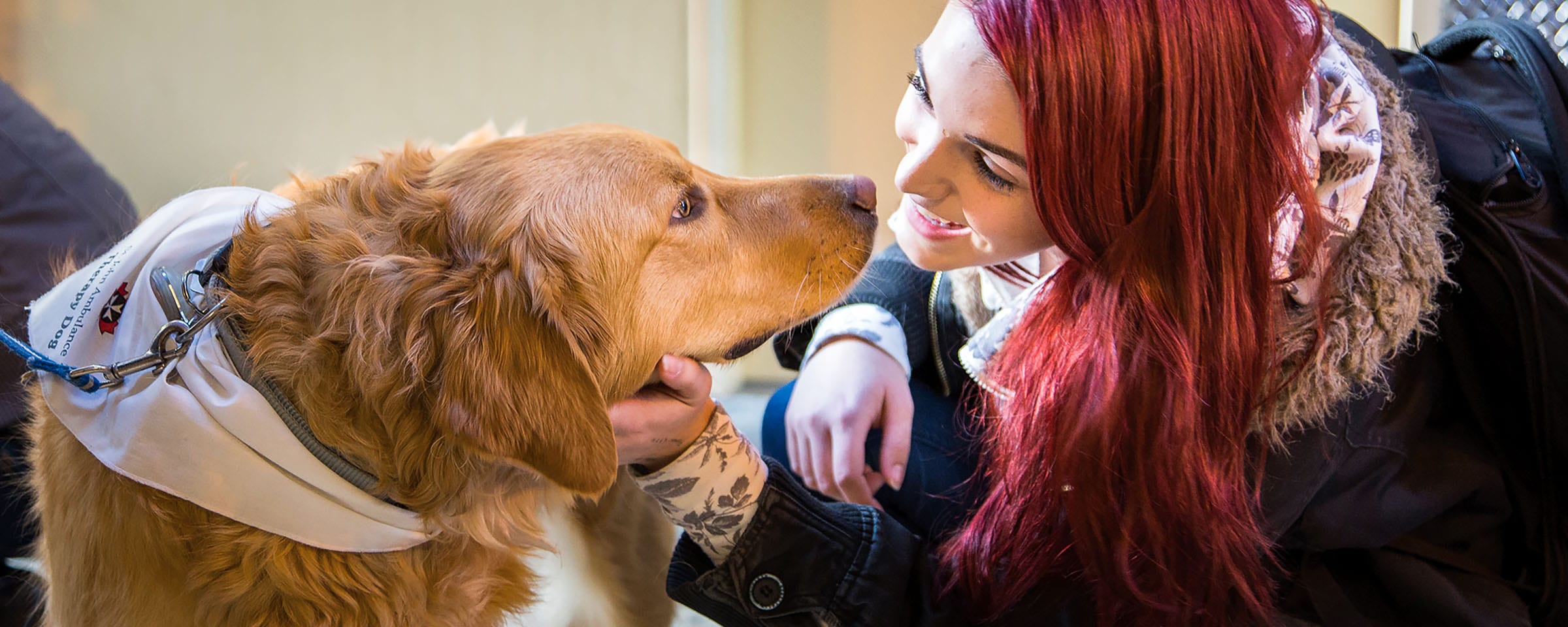September Stretch of the Month
Explore our September Stretch of the Month: the Low Lunge, perfect for melting away tension and tightness in and around your hips. Excellent for students and staff alike, this stretch addresses tightness in the hip flexors that is often exacerbated by prolonged sitting such as during desk work, or when studying.
How to do it

- Begin by kneeling on your right knee with your left foot planted in front of you. Gently shift your weight forward by stepping your left foot farther in front of you. Ensure that your left knee stays directly over your left ankle, and your right leg extends straight behind you with the top of your right foot resting on the floor.
- To maximize the stretch, make sure to keep your hips squared. This means your right hip should move slightly forward, and your left hip should move slightly back, aligning your hips with your body.
- Gradually lower your hips towards the floor to sink into this lunge, feeling a stretch in your right hip flexor and thigh. Maintain a neutral spine and avoid letting your left knee push beyond your toes.
- Hold this position for 30-60 seconds. Breathe deeply and relax into the stretch, feeling the lengthening in your hip flexors and thighs. Repeat the stretch on the other side by stepping your right foot forward and extending your left leg behind you. If desired, repeat 2-3 times on each side.
Benefits of this stretch
Improves Hip Flexor Flexibility: The stretch targets the hip flexors, which can become tight from prolonged sitting. Increased flexibility in this area helps improve overall mobility and reduces stiffness.
Enhances Hamstring and Quadriceps Flexibility: By stretching the hip flexors and the front of the thigh, the low lunge also helps lengthen the hamstrings and quadriceps, promoting better range of motion and reducing the risk of muscle strains.
Relieves Lower Back Tension: Tight hip flexors can contribute to lower back pain. Stretching these muscles can help alleviate tension in the lower back, improving comfort and posture.
Promotes Better Posture: By opening up the hip flexors and improving overall flexibility, the low lunge can contribute to better alignment and posture, reducing slouching and promoting a more upright stance.
Improves Balance and Stability: The low lunge engages the core muscles and requires balance, helping to enhance stability and coordination.
Enhances Athletic Performance: Improved flexibility and mobility in the hips can benefit various athletic activities, from running to sports requiring quick lateral movements.
Try it Today!
When performing this stretch it’s important to listen to your body—stretching should feel pleasant and relieving, never painful. Embrace this stretch to enhance your well-being and enjoy the benefits of a more relaxed lower body.
SOURCES:
What is the difference between a runner’s lunge and a Low Lunge? – Hosh Yoga
The Health Benefits of Anjaneyasana (Low Lunge Pose) – CNYHealingArts
Low Lunge (Anjaneyasana): Benefits, Pose and Variations (mentalfoodchain.com)
Anjaneyasana (Low-Lunge Pose): Steps, Variations & Benefits – Fitsri Yoga
